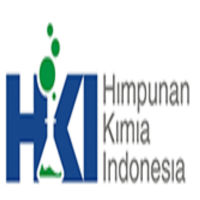KLASIFIKASI DAUN BIDURI (Calotropis gigantea L.) DARI LOKASI BERBEDA MENGGUNAKAN SPEKTROSKOPI INFRAMERAH DAN KEMOMETRIK
Abstract
In this study, FTIR spectroscopy paired with PCA was utilized to differentiate biduri plants from different places. All biduri leaf samples from each location were then obtained for their FTIR spectrum in the wave number range of 4000-400 cm-1 and pretreated with the 1st derivative. The preprocessed spectrum was then examined using HCA and PCA chemometric methods; based on the HCA classification results, the biduri samples were divided into three groups, but the selected groups were unable to identify the biduri samples from the geothermal manifestation area. The PCA findings displayed in the plot scores then successfully classified the biduri leaf samples into four groups, with a total variance explained by 63% (PC1 44% and PC2 19%). This developed method can be used to correctly identify biduri plants originating from the geothermal manifestation area of Mount Seulawah Agam, allowing it to be concluded that environmental conditions in the geothermal manifestation area of Mount Seulawah Agam affect the content of secondary metabolites present in biduri plants, as evidenced by the PCA plot, which shows samples from geothermal and non-geothermal locations forming their respective groups.
Keywords
Full Text:
PDFReferences
Adi, D. S., Hwang, S. W., Pramasari, D. A., Amin, Y., Cipta, H., Damayanti, R., Dwianto, W., & Sugiyama, J. (2020). Anatomical properties and near infrared spectra characteristics of four shorea species from Indonesia. HAYATI Journal of Biosciences, 27(3), 247–257. https://doi.org/10.4308/hjb.27.3.247
Baillie, C. K., Kaufholdt, D., Meinen, R., Hu, B., Rennenberg, H., Hänsch, R., & Bloem, E. (2018). Surviving Volcanic environments-interaction of soil mineral content and plant element composition. Frontiers in Environmental Science, 6(JUN). https://doi.org/10.3389/fenvs.2018.00052
Cen, H., & He, Y. (2007). Theory and application of near infrared reflectance spectroscopy in determination of food quality. Trends in Food Science and Technology, 18(2), 72–83. https://doi.org/10.1016/j.tifs.2006.09.003
Egbueri, J. C. (2020). Groundwater quality assessment using pollution index of groundwater (PIG), ecological risk index (ERI) and hierarchical cluster analysis (HCA): a case study. Groundwater for Sustainable Development, 10, 100292.
Gad, H. A., El-Ahmady, S. H., Abou-Shoer, M. I., & Al-Azizi, M. M. (2013). Application of Chemometrics in Authentication of Herbal Medicines: A Review. Phytochemical Analysis, 24(1), 1–24. https://doi.org/10.1002/pca.2378
Hands, J. R., Clemens, G., Stables, R., Ashton, K., Brodbelt, A., Davis, C., Dawson, T. P., Jenkinson, M. D., Lea, R. W., & Walker, C. (2016). Brain tumour differentiation: rapid stratified serum diagnostics via attenuated total reflection Fourier-transform infrared spectroscopy. Journal of Neuro-Oncology, 127(3), 463–472.
Jiménez-Carvelo, A. M., Lozano, V. A., & Olivieri, A. C. (2019). Comparative chemometric analysis of fluorescence and near infrared spectroscopies for authenticity confirmation and geographical origin of Argentinean extra virgin olive oils. Food Control, 96, 22–28.
Kanakis, C. D., Petrakis, E. A., Kimbaris, A. C., Pappas, C., Tarantilis, P. A., & Polissiou, M. G. (2012). Classification of Greek Mentha pulegium L.(Pennyroyal) samples, according to geographical location by Fourier transform infrared spectroscopy. Phytochemical Analysis, 23(1), 34–43.
Liu, D., Li, Y.-G., Xu, H., Sun, S.-Q., & Wang, Z.-T. (2008). Differentiation of the root of Cultivated Ginseng, Mountain Cultivated Ginseng and Mountain Wild Ginseng using FT-IR and two-dimensional correlation IR spectroscopy. Journal of Molecular Structure, 883–884, 228–235. https://doi.org/10.1016/j.molstruc.2008.02.025
Liu, W., Wang, D., Hou, X., Yang, Y., Xue, X., Jia, Q., Zhang, L., Zhao, W., & Yin, D. (2018). Effects of Growing Location on the Contents of Main Active Components and Antioxidant Activity of Dasiphora fruticosa (L.) Rydb. by Chemometric Methods. Chemistry and Biodiversity, 15(7). https://doi.org/10.1002/cbdv.201800114
Novia, F., Kala, P. R., Rukmana, S. M., & Karma, T. (2021). Penentuan Kadar Flavonoid Total Ekstrak Etanol Daun Biduri (Calotropis gigantea L). Jurnal KANAKA, 1(1), 1–4.
Noviyanty, Y., Agustian, Y., Bengkulu, A. F. A., Analis, A., Harapan, K., & Bengkulu, B. (2020). Identifikasi dan penetapan kadar senyawa tanin pada ekstrak daun biduri (Calotropis gigantea) metode spektrofotometri Uv-Vis. Vol, 6, 57–64.
Sanchez, P. M., Pauli, E. D., Scheel, G. L., Rakocevic, M., Bruns, R. E., & Scarminio, I. S. (2018). Irrigation and light access effects on Coffea arabica L. leaves by FTIR-chemometric analysis. Journal of The Brazilian Chemical Society, 29(1), 168–176.
Smith, M. J., Holmes-Smith, A. S., & Lennard, F. (2019). Development of non-destructive methodology using ATR-FTIR with PCA to differentiate between historical Pacific barkcloth. Journal of Cultural Heritage, 39, 32–41. https://doi.org/https://doi.org/10.1016/j.culher.2019.03.006
Suresh, S., Karthikeyan, S., & Jayamoorthy, K. (2016). FTIR and multivariate analysis to study the effect of bulk and nano copper oxide on peanut plant leaves. Journal of Science: Advanced Materials and Devices, 1(3), 343–350. https://doi.org/https://doi.org/10.1016/j.jsamd.2016.08.004
Thummajitsakul, S., Samaikam, S., Tacha, S., & Silprasit, K. (2020). Study on FTIR spectroscopy, total phenolic content, antioxidant activity and anti-amylase activity of extracts and different tea forms of Garcinia schomburgkiana leaves. LWT, 134, 110005. https://doi.org/https://doi.org/10.1016/j.lwt.2020.110005
Turner, N. W., Cauchi, M., Piletska, E. V, Preston, C., & Piletsky, S. A. (2009). Rapid qualitative and quantitative analysis of opiates in extract of poppy head via FTIR and chemometrics: Towards in-field sensors. Biosensors and Bioelectronics, 24(11), 3322–3328.
Zhu, H., Wang, Y., Liu, Y., Xia, Y., & Tang, T. (2010). Analysis of flavonoids in Portulaca oleracea L. by UV–vis spectrophotometry with comparative study on different extraction technologies. Food Analytical Methods, 3(2), 90–97.
DOI: http://dx.doi.org/10.22373/lj.v11i2.15096
Refbacks
- There are currently no refbacks.
Copyright (c) 2023 Hafni Zahara, Taufiq Karma, Taufiq Karma

This work is licensed under a Creative Commons Attribution 4.0 International License.
INDEXED IN

